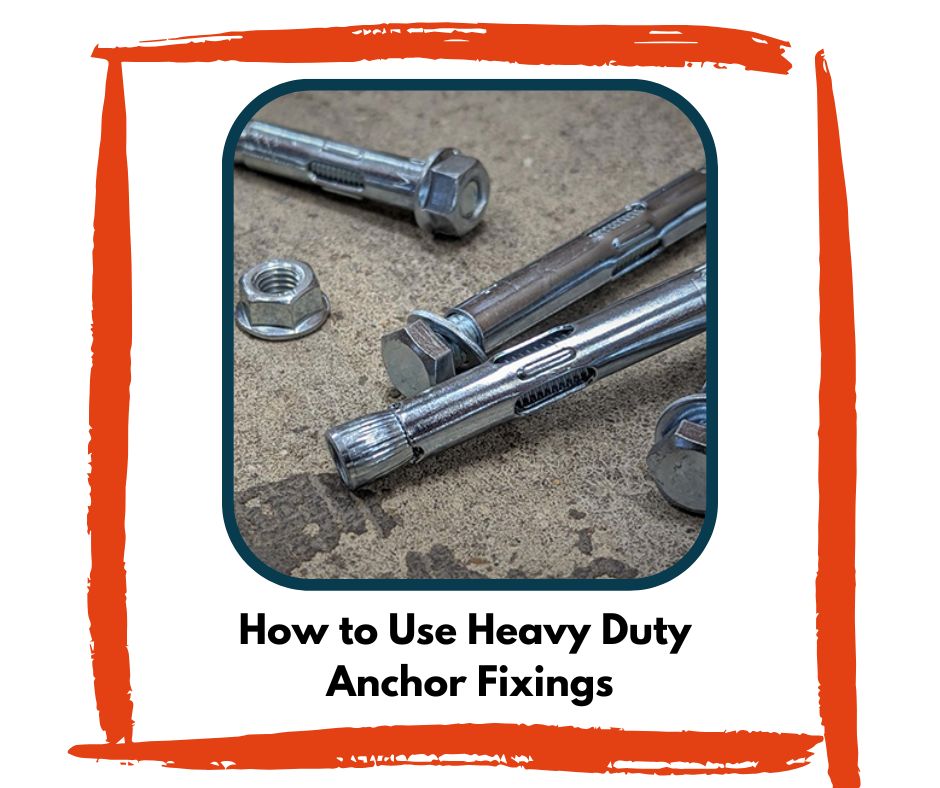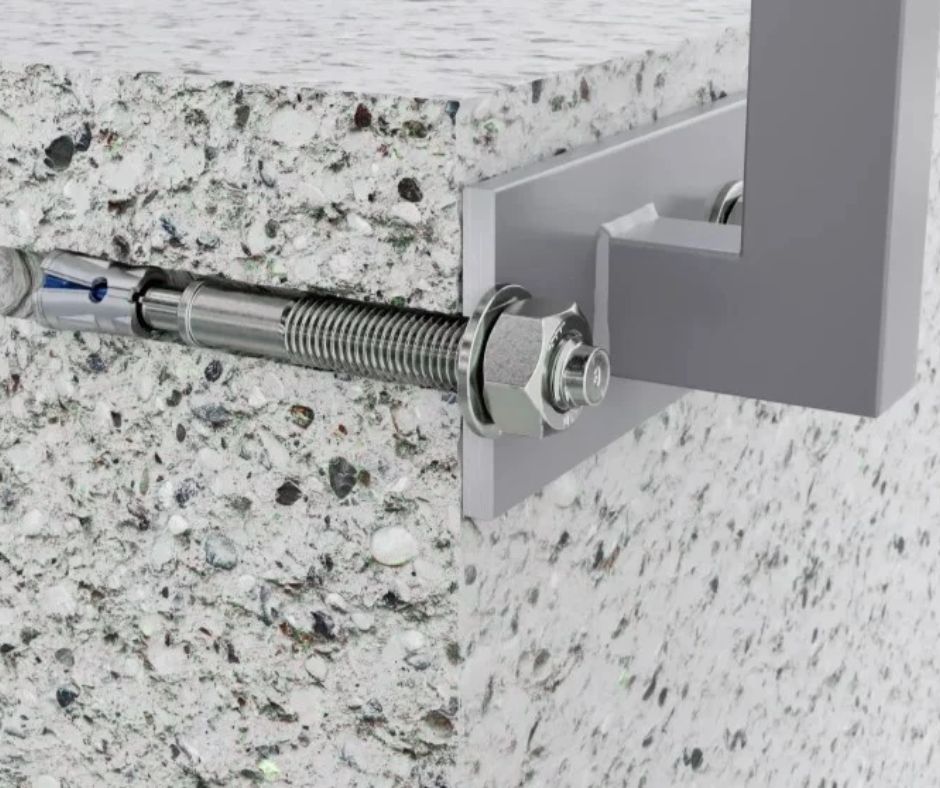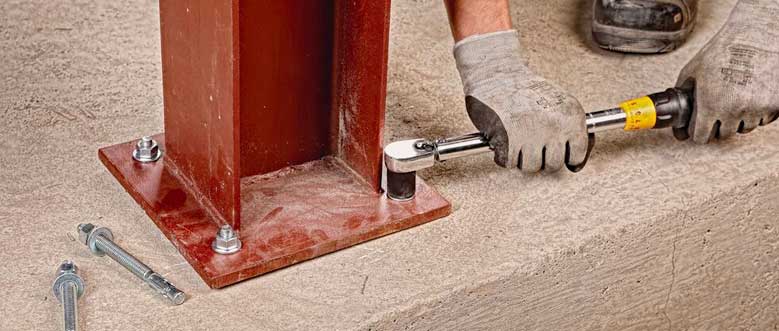How to Use Heavy Duty Anchor Fixings
How to Use Heavy Duty Anchor Fixings
Whether you're fitting steel beams on a commercial job site or mounting a pergola in your back garden, anchor fixings are one of the most reliable ways to secure heavy loads to solid materials like concrete, brick, or stone.
They're a staple in construction, engineering, and advanced DIY projects—and using them correctly is crucial for safety, durability, and long-term performance.
In this comprehensive guide, we’ll explore what anchor fixings are, when and how to use heavy-duty anchor fixings, and what extra considerations you should take into account when working on structural or machinery-based installations.

What Are Anchor Fixings?
Anchor fixings are robust fasteners that allow you to connect materials—usually via bolts—to a solid substrate such as concrete, block, or stone. They're specially designed to offer exceptional grip and load-bearing capacity in environments where standard wall plugs and screws would fail.
Most anchor systems work by either:
- Expanding mechanically inside the hole to grip the sides of the material, or
- Bonding chemically using specialist resins to create a high-strength hold within the substrate.
There are several types of anchor fixings available at Fix and Fast, each designed for different tasks, materials, and load requirements.
When Should You Use Heavy Duty Anchor Fixings?
Heavy duty anchor fixings are used when a job demands more than just a simple screw or plug. If you're fastening into a solid surface and the item you're attaching is heavy, load-bearing, or exposed to external stress (like wind, vibration, or impact), then you’ll need a solution that guarantees reliability.
Typical use cases include:
- Securing structural steelwork to concrete floors or walls
- Mounting heavy plant or machinery
- Installing safety railings or protective barriers
- Fixing satellite dishes, canopies, or signs on brickwork
- Supporting timber frames or pergolas
- Hanging large industrial racking or shelving systems
- Attaching posts or gates to paving slabs or driveways
Even advanced DIYers will encounter situations where standard plugs and screws simply won’t hold. That’s where anchor bolts and fixings come in.

Choosing the Right Type of Anchor Fixing
The type of fixing you use depends on several key factors:
- Substrate Material - Are you fixing into concrete, brick, breeze blocks, or natural stone? Each surface has different density and grip characteristics.
- Load Type - Will the fixing support a vertical weight (tension), resist horizontal force or both? This affects the anchor’s design and load rating.
- 3. Environment - Is the area exposed to weather, moisture, or corrosive chemicals? For example, marine environments will require stainless steel bolts or galvanised anchors.
- Installation Conditions - Can you access both sides of the fixing point? Is the hole easily drillable? Some anchors require more clearance and working space.
How to Install Heavy Duty Anchor Fixings (Step-by-Step)
Correct installation is key to performance and safety. Here's a general method for using heavy-duty mechanical or chemical anchors:
Step 1: Mark and Drill
- Use a hammer drill or SDS rotary drill to make your hole.
- The hole should match the anchor diameter and go slightly deeper than the fixing to allow for debris clearance.
- Check the manufacturer's recommendations to be sure.
Step 2: Clean the Hole
- Use a dust blower, vacuum, or hole brush to remove debris.
- For chemical fixings, a clean hole is essential to ensure full bonding strength.
Step 3: Insert the Anchor
- Mechanical Anchors: Tap the fixing into place, then tighten the bolt or nut until it expands securely within the hole.
- Chemical Anchors: Inject resin using a dispensing gun, then insert the threaded rod while twisting slightly. Allow to cure fully before applying any load.
Step 4: Secure the Load
- Once your fixing is in place and the bolt is tightened to the correct spec, you’re ready to mount the item or structure.

Additional Things to Consider
When you're using anchor fixings in structural or industrial environments, there are extra safety and engineering requirements you should keep in mind:
- Vibration Resistance - For equipment that vibrates or shifts under operation (like compressors or machinery), opt for chemical fixings or vibration-resistant washers and nuts.
- Corrosion Protection - In damp or outdoor environments, use galvanised or stainless steel bolts to prevent rust. This is especially important for fixtures like railings, signage, or external supports.
- Load Calculations - Always confirm the shear and tensile load ratings of the anchor fixing you're using. The wrong anchor could fail under strain.
- Compliance and Certification - On-site construction projects often require compliance with UK regulations such as BS EN 1992-4.
Maintenance and Inspection
Even the best-installed anchor fixings need to be checked periodically, especially in high-stress or exposed environments. Look out for:
- Loosening of bolts over time
- Signs of rust or corrosion
- Cracks forming in the substrate
- Fatigue around the fixing point (especially for vibration-prone applications)
Re-tighten as needed, and always replace damaged or corroded components with approved alternatives.
How Can Fix & Fast Help?
At Fix & Fast, we supply a wide selection of anchor fixings, bolting products, and accessories from trusted UK brands—all available for fast dispatch and bulk trade discounts.
Whether you're a construction site manager, building contractor, or home renovator, you'll find:
- CE marked and tested fixings
- Full technical datasheets and installation guides
- Competitive trade pricing
- Customer support from fastener specialists
Final Thoughts
Heavy-duty anchor fixings are the foundation of any secure, long-lasting installation involving concrete, brick, or stone. Choosing the right anchor, using the correct installation technique, and maintaining it over time ensures that whatever you’re fastening stays put—safely and securely.
For quality you can rely on, shop the full range of anchor fixings and bolts at Fix & Fast.







